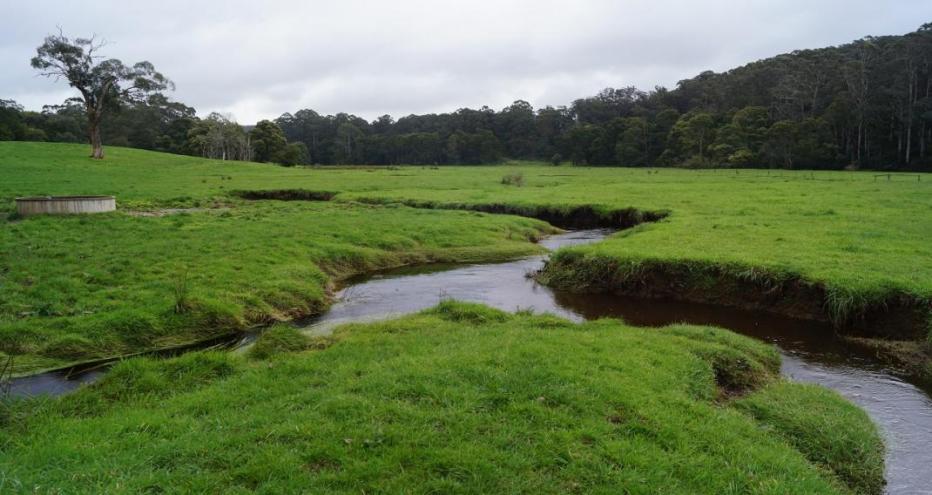
In Victoria, Australia, the water sector contributes about 25 percent of the greenhouse gas emissions that the state government is responsible for. Recently, each of the state’s 19 water corporations committed to achieving net zero emissions by or before 2050 – and Jacobs was engaged to work with the sector – comprised by Catchment Management Authorities (CMAs), Water Corporations and the Department of Environment, Land, Water and Planning (DELWP) – on a Catchment Carbon Offsets Trial to help the corporations identify possible strategies to meet the net zero emissions goal by 2050.
-
19
water corporations in the State of Victoria, Australia
-
25 %
of current emissions in the state come from the water sector
-
2050
goal for net zero emissions
“The Catchment Carbon Offset Trial developed and piloted – through a case study – an effective framework by which Water Corporations and CMAs can collaborate in generating carbon offsets that also build landscape climate resilience and provide complementary environmental and socio-economic benefits.”
Offsetting emissions and benefitting the triple-bottom-line
While the primary focus for the Carbon Catchment Offsets Trial is on reducing direct emissions and those associated with energy use, some water corporations will need to offset unavoidable emissions associated with wastewater treatment. Jacobs worked with Victoria’s water sector to undertake the trial, which explored the use of offsets to help achieve emissions reduction objectives, while providing other catchment-based environmental, social and/or cultural benefits, that complemented state or regional policies and strategies on climate change, water, catchment management and biodiversity.
Catchment carbon offset case study
A key feature of the trial included a case study to explore the “implementation pathway” for catchment carbon offset (CCO) projects, conducted in the Gellibrand River catchment of south-west Victoria. It was intended to demonstrate how CCO projects could be designed to deliver emissions reductions, climate resilience in landscapes, improved catchment health and better alignment between regional NRM plans and water sector emissions abatement and how these co-benefits could be evaluated.
The trial team designed the case study to improve water quality in the catchment above Wannon Water’s Otway South water offtake on the Gellibrand River, while at least satisfying Wannon Water’s expected annual carbon offset requirements. Wannon Water’s two water offtakes in the Gellibrand catchment are the main sources of drinking water for Warrnambool and surrounding areas, serving more than 35,000 people. As a key waterway and catchment area for Corangamite CMA, the case study also focused design on improving river heath and biodiversity, build climate resilience in these landscapes and generate other environmental and social benefits.
The case study considered three main vegetation configurations:
- 20-meter waterway buffer: 20-meter revegetated buffer both sides of all defined waterways within the case study catchment, representing the minimum width of revegetated buffer to materially improve water quality in the main waterways and catchment.
- 100-meter waterway buffer: 100-meter revegetated buffer both sides of all defined waterways within the case study catchment, representing the plausible upper limit of revegetation in the catchment.
- Floodplain + 20-meter buffer: 20-meter revegetated buffer both sides of all defined waterways, with further areas of revegetation occupying all of the floodplain for a 1 percent annual exceedance probability (AEP) flood event (or 100 y average recurrence interval flood).
In each configuration, the 20-meter buffer on each side of the waterway would be revegetated with locally indigenous species of trees and shrubs. The remainder of the buffer would either be established with locally indigenous native trees and shrubs or farm forestry plantings.
The case study found that, at least in the Gellibrand catchment, a CCO project could provide a cost-effective option to generate certifiable carbon offsets (at least 8000 t CO2e/y) to help Wannon Water meet its emissions reduction targets. It could do so while improving catchment water quality and providing other complementary environmental and social benefits. After the case study, we developed a replicable method for designing and evaluating potential catchment carbon offsets projects – and processes and tools to apply to potential catchment carbon offsets projects in other settings and at different scales.
The Climate Change Business Journal recognized the trial with a 2018 Policy Innovation award.














































